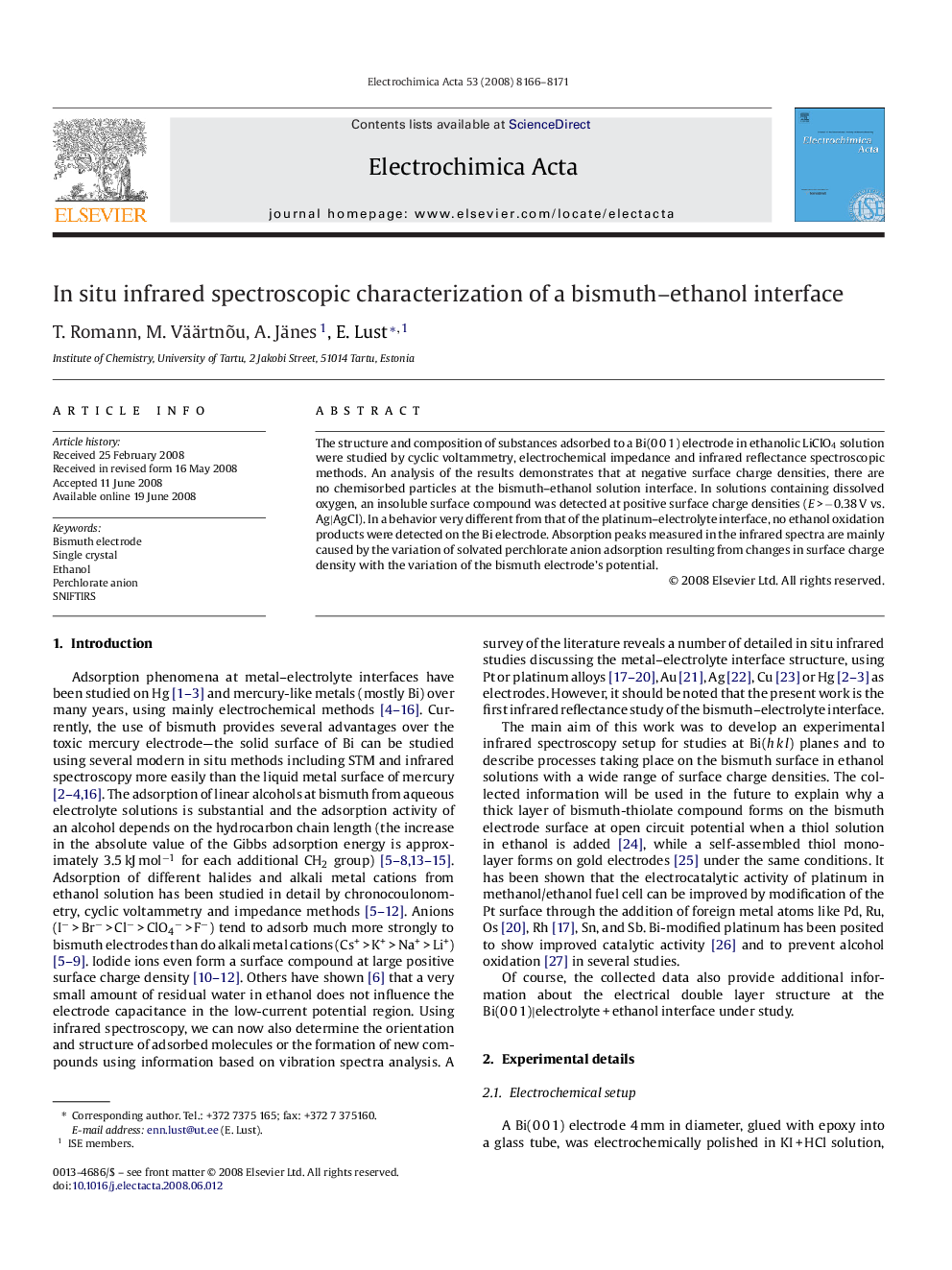| Article ID | Journal | Published Year | Pages | File Type |
|---|---|---|---|---|
| 194386 | Electrochimica Acta | 2008 | 6 Pages |
The structure and composition of substances adsorbed to a Bi(0 0 1) electrode in ethanolic LiClO4 solution were studied by cyclic voltammetry, electrochemical impedance and infrared reflectance spectroscopic methods. An analysis of the results demonstrates that at negative surface charge densities, there are no chemisorbed particles at the bismuth–ethanol solution interface. In solutions containing dissolved oxygen, an insoluble surface compound was detected at positive surface charge densities (E > −0.38 V vs. Ag|AgCl). In a behavior very different from that of the platinum–electrolyte interface, no ethanol oxidation products were detected on the Bi electrode. Absorption peaks measured in the infrared spectra are mainly caused by the variation of solvated perchlorate anion adsorption resulting from changes in surface charge density with the variation of the bismuth electrode's potential.
